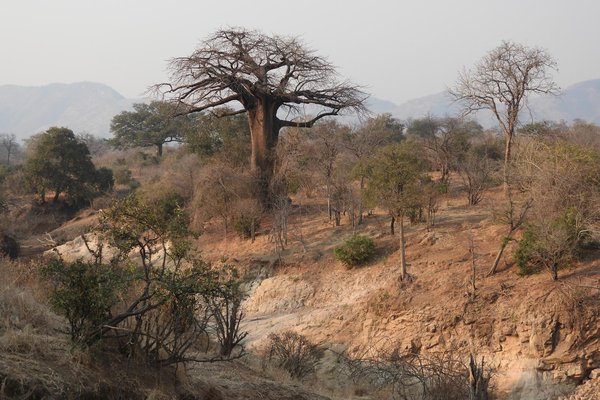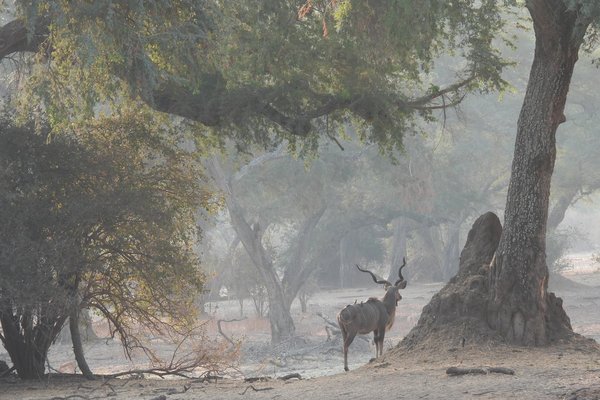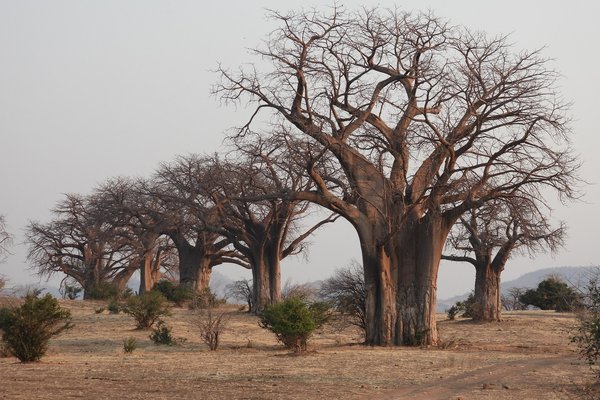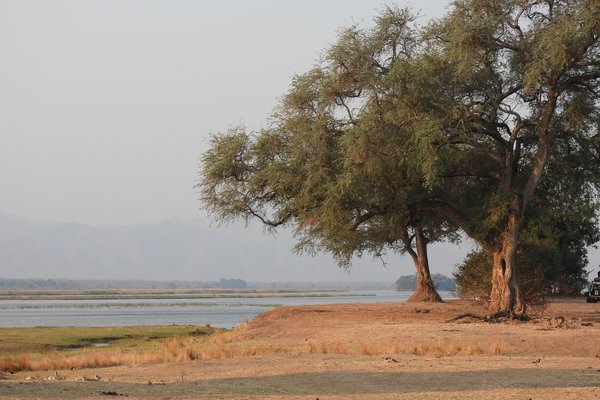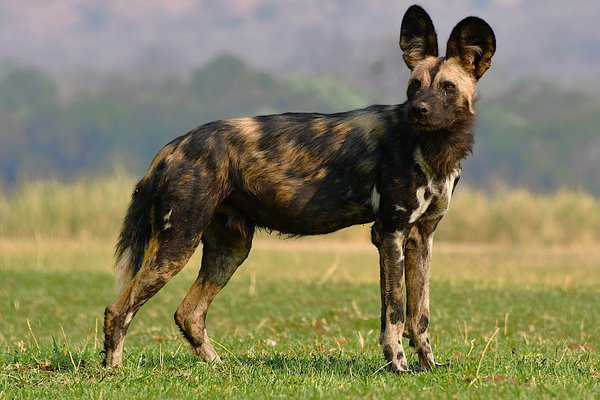Zimbabwe
Mana Pools
Mana Pools National Park, Sapi and Chewore Safari Areas are renowned for their wildlife gatherings during the dry season.
The three conservation areas are situated in the Zambezi Valley, along the Middle and Lower Zambezi Rivers. Mana Pools is centered around four large permanent pools. The river and the sandbanks that are formed by erosion and deposition form a refuge for species such as elephants, buffalo, lions, wild dogs, Nile crocodiles and hippos.
Community Perspective: uncrowded (although that is rapidly changing), “an utterly wild place, sleeping outside with the sound of roaring lions, whooping hyenas and grunting hippos”. Els went camping and has provided practical info on how to visit this remote park, while Svein described the experience from Vundu Camp which has a private concession. Wojtek did it as a self-drive day trip on a budget.
Site Info
Official Information
- Full Name
- Mana Pools National Park, Sapi and Chewore Safari Areas (ID: 302)
- Country
- Zimbabwe
- Status
-
Inscribed 1984
Site history
History of Mana Pools
- 1984: Inscribed
- Inscribed
- Type
- Natural
- Criteria
- vii
- ix
- x
Links
- UNESCO
- whc.unesco.org
- Official
-
- zimparks.org.zw — Mana Pools National Park
All Links
UNESCO.org
- whc.unesco.org — whc.unesco.org/
Official Website
- zimparks.org.zw — Mana Pools National Park
News Article
- May 10, 2023 news24.com — World heritage site in Zimbabwe targeted for oil exploration
- Nov. 8, 2019 koaa.com — Severe drought killing elephants, other wildlife in Mana Pools
- Sept. 27, 2018 newzimbabwe.com — German tourist trampled to death by elephant in Mana Pools
- March 15, 2016 theguardian.com — Father and son on anti-poaching patrol killed by ranger in Zimbabwe
- Nov. 16, 2012 allafrica.com — Controversial construction of luxury campsite at Mana Pools
Community Information
- Community Category
- Wildlife habitat: Fauna
Travel Information
Recent Connections
-
Perfect Inscriptions
1984 -
African Wild Dog
"is one of the most important refuges f… -
Plant WHS not in a CPD
"The area is also considered an importa…
Connections of Mana Pools
- Geography
-
-
Zambezi basin
Located on the banks of the Zambezi River. The Mana Pools are former channels of the Zambezi River (OUV) -
On National Border
On Zambia border
-
- Trivia
-
-
Total Solar Eclipse since Inscription
21 June, 2001
-
- Ecology
-
-
Strepsirrhini
Mohol bushbaby -
Hippos
At Zambezi River: "The river is also famous for its sizeable numbers of hippopotamus and Nile crocodile." (OUV) -
Crocodiles
"A healthy population of the threatened Nile crocodile is also present" (AB ev) -
Elephants
African elephant -
High-Biodiversity Wilderness Area
Miombo-Mopane Woodlands and Savannas -
Lions
Estimate of of 67 adult and sub-adult lions (2008-2011) -
Over 300 bird species
"Bird life along the river and in the bush is prolific with over 380 species" (AB ev) -
African Wild Dog
"is one of the most important refuges for ...... a number of other threatened species (.......wild dog)" (AB eval) and Nile crocodile) and therefore meets criteria iv
-
- Damaged
-
-
Poaching
rhino since inscription eradicated due to poaching; poaching remains a problem for rhino re-introduction as well as for other species such as elephant
-
- World Heritage Process
-
-
First inscriptions
Zimbabwe 1984 -
Perfect Inscriptions
1984
-
- WHS on Other Lists
-
-
Ramsar Wetlands
As 'Mana Pools National Park' (2013)See rsis.ramsar.org
-
Plant WHS not in a CPD
"The area is also considered an important refuge for a number of plants and birds" (OUV) -
World Biosphere Reserves
2010 - "Middle Zambezi, Zimbabwe, stretching over some 40,000 square kilometers in the Zambezi valley, features unique riverine and terrestrial ecosystems, including a large human-made reservoir, Lake Kariba. The Mana Pools National Park, part of the core area, is a UNESCO World Heritage Site."
-
- Timeline
-
-
Late Pleistocene
From that same late Pleistocene era, pollen records prove an increase of mangrove and coastal vegetation, implying an extension of coastal wetlands during flooding of the broad, low-gradient Zambezi inner shelf area. (EOEarth)
-
- Visiting conditions
-
-
Foreigner prices
Foreigners pay 20 USD per day plus 10 USD per vehicle, 'regionals' 15/10 USD and locals 8/5 USD.
-
News
- news24.com 05/10/2023
- World heritage site in Zimbabwe ta…
- koaa.com 11/08/2019
- Severe drought killing elephants, …
- newzimbabwe.com 09/27/2018
- German tourist trampled to death b…
Community Reviews
Show full reviews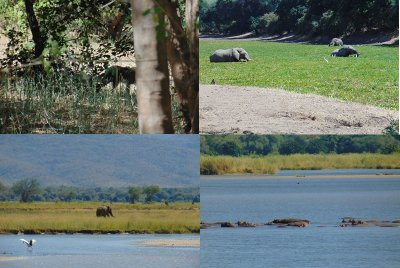
Since the previous reviewers described their thorough yet expensive visits to the park, I will focus on practicalities how to get in and around on a budget as a family trip (2 adults, 2 children). Visit in early May 2024.
The area around the national park is probably the least visited part of Zimbabwe - there is no large city nearby, even the main Harare-Lusaka road is in terrible condition. It's hard to find any place to sleep. I used Makuti Travel Lodge, which is closest to the park. Its owner, Davie (whatsapp +263779450211), prepared a room for us even though his lodge is officially closed for renovation (it should open in September or October 2024, and certainly in 2025). We paid USD 40 for an adult, USD 20 for a child - total USD 120. If someone doesn't want to sleep in Makuti, you can try to find a place to sleep in Karoi (the last larger town in Zimbabwe) or in Zambia (preferably in Chirundu). From Karoi to the park gate it is about 100 km, from Chirundu 40 km plus crossing the border. The last gas station is in Makuti, right next to the Makuti Travel Lodge - it's worth making sure you have a full tank for a trip to the park.
To visit Mana Pools on your own, go to the Northern Zimbabwe national parks headquarters in Marangora (about 15 minutes from Makuti). They open at 7 a.m., so if you start at …
Keep reading 0 comments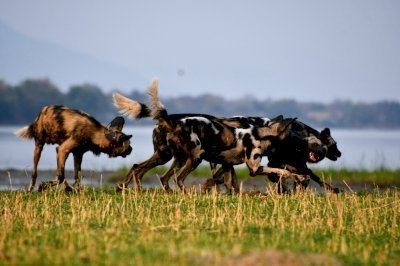
Zimbabwe has been on our radar since we started visiting sub-Sahara Africa some years ago. Late September '23 we realized the trip.
Our trip was a road trip starting in Lusaka Zambia southbound and our first goal was (except secondary goal of Chirundu twhs in Zambia) Mana Pools National Park. It’s the site that really drives the cost on this trip. The park is a valley hosting the Zambezi River on the northern border to Zambia and is famous for its dry season wildlife gatherings. The WHS consists of three areas (Mana Pools, Sapi and Chewore), but we were told that Mana is by far the best area - for wildlife encounters.
Having spent the night just across the border from Zambia west of the park we entered the park fairly early one morning. Although it’s possible to see wildlife from the first gate we didn’t really have any encounters until we were way in the park. Camp headquarters (where we had to register a third time) are on the bank of Zambezi and from that point it was wildlife for three days. We experienced the famous “blue haze” although without Boswell (see Els’ review), but it was lots of other elephants and other animals.
The first afternoon/evening we spent mostly at the riverbank photographing lions, hippos, elephants, the pretty carmine bee-eaters, and other animals. The mandatory sundowner (which seams way over the top colonial I must admit, but it) makes the African sunset even more special.
… Keep reading 0 comments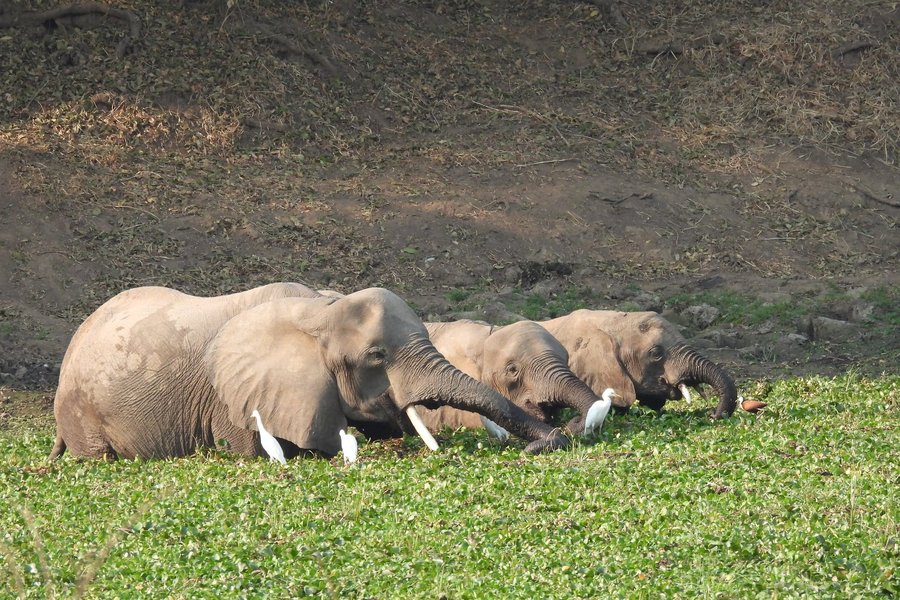
Mana Pools National Park was the main goal of my 2023 Zimbabwe trip – rarely visited by our community, lacking a full review, but ranked among the best parks in Africa by safari nuts due to its large gatherings of wildlife in a ‘wild’ setting. Lately, Mana Pools is considered to have become ‘busy’ due to the ever-increasing number of camps and the accompanying vehicular traffic and what the IUCN Outlook 2020 describes as "crowding of iconic elephants and predator kills". The connoisseurs now prefer the even wilder Gonarezhou in the east of the country. As far as I have seen, the park shows no indication whatsoever of being a World Heritage Site (no plaque, no logos).
I spent 6 nights camping in the park as part of a 13-day safari tour: 3 nights at Chitake Springs and 3 nights at Mana Riverside. I will remember it mostly for its scenic landscapes. The rough area around Chitake Springs is covered with picturesque baobabs and even has its own ‘Baobab Avenue’. It also best shows the eroded 'sand-bank' environment – created by a large seasonal river - that is part of the site’s OUV. There are only a handful of (often sold-out) wild camping spots here and there are no roads.
The more developed Mana Riverside has a fine setting along the Zambezi River (a bit similar to Botswana’s Chobe NP), plus the ‘blue forests’ that it is famous for among serious photographers. The blue haze is created by smoke from …
Keep reading 0 comments
I am a zimbabwean living overseas now, we as a family used to go to mana alot, it is the most amazing place i have ever been and i have travelled the world extensively,There is such a spirit about mana ancient in time i feel so primal when i am there i recomend mana pools to anyone who loves nature, wildlife and fishing . i hope mana stays free of poaching and it is managed honestly. i would love to organise events here in newzealand to raise money for the preservation of the park
Keep reading 0 comments
I went to Mana Pools in December with my brother, who lives in Zimbabwe. It was one of the most beautiful places I have ever been, and the experience was enhanced by seeing the rare & elusive painted hunting dogs, and also lions, elephants, hippos, crocodiles, hyenas and other species of animals and birds too numerous to mention. The experience of living for five days in such an utterly wild place, sleeping outside with the sound of roaring lions, whooping hyenas and grunting hippos to lull me to sleep, and spending the days surrounded by such stunning scenery, is one I will never forget.
Difficult to get a place in a lodge unless you know a Zimbabwe resident (& even then not easy), but there are campsites open in the dry season, and it's well worth visiting if you can find a way.
Keep reading 0 comments
